A few years ago I was drawn into conversations with a group of near strangers about why history seemed to be marginalized in this country. From what gets taught in schools, to what gets funding, to what informs policy and business decisions, we wondered if we could brand history in the successful way that Science Technology Engineering and Math are shorthanded as “STEM.” Our group of volunteers began to meet monthly, while making presentations and holding town hall discussions at several national conferences. We began calling the effort the History Relevance Campaign (HRC). Obviously, other people and organizations over many decades had articulated why history matters, and we were aware of the American Academy of Arts and Sciences 2013 The Heart of the Matter report advocating for the humanities. But we aimed for something simple and universally applicable.
History has the potential to be the most interdisciplinary of the disciplines. As Jim Grossman at the American Historical Association likes to say (and tweet), #EverythingHasaHistory.[i] Indeed, history organizations make up over 55 percent of the 35,000 museums that the Institute for Museum and Library Services tallied in 2014.[ii] And in the 2014 Humanities at the Crossroads report, more than 80 percent of all humanities organizations surveyed across the state of Indiana offered history programming.[iii] I would argue history is the bedrock of the humanities.
HRC continues to grow and the strangers have become friends and colleagues. One of the best results for me personally has been sharing ideas with so many strong advocates for history and the humanities. We found that while we all drew from a core set of assumptions about why history is essential, too infrequently had we ever tried to articulate those thoughts. Writing the out in a direct style, in one place, where all of us could refer back to them, we realized, would be a powerful device. The result is the Value of History statement which outlines seven ways that history is crucial in contemporary life. So far one hundred and sixteen organizations have endorsed the statement. The statement’s power, I believe, is that it provides a common language for making the argument in a wide variety of settings. Alongside the statement the HRC has a Toolkit Project, which is an ongoing crowdsourced resource that will help organizations of all sizes better speak the value of history to Chambers of Commerce, prospective funders, community leaders, visitors, Members of Congress, local students, taxpayers, and the press.
Besides a common language, people across the historical enterprise should have measurable evidence that their work is affecting lives. The Impact Project is an HRC effort to find examples of organizations that are not only doing impactful programming that demonstrates history’s relevance in the community, but are also collecting and analyzing evidence of that impact. By documenting these best practice projects, others—such as funding agencies desiring proof of impact—can learn from them. We welcome you to help us collect this information. HRC is also working with the National Governor’s Association Education and Workforce committee to help administrators at the state level articulate and promote the value of connecting the past to the present.
Promoting a great variety of uses of the Value of History statement, compiling examples of history having an impact, and working through state government are three things our small, informal group has tackled. We invite you to join or propose an HRC task force, we urge you to make your own stand for history, and we welcome all allies. Visit us at http://www.historyrelevance.com/, join HRC on LinkedIn, and endorse and use the statement.
John R. Dichtl is the president and CEO of the American Association for State and Local History.
_________________________
[i] “Everything Has a History,” Perspectives on History: The News Magazine of the American Historical Association, December 2015.[ii] Institute of Museum and Library Services, “Government Doubles Official Estimate: There are 35,000 Active Museums in the U.S.,“ May 19, 2014, available from http://on.aaslh.org/IMLS2014Estimate
[iii] Felicia M. Sullivan, Nancy N. Conner, Kei Kawashima-Ginsberg, Peter Levine, and Elizabeth Lynn, Humanities at the Crossroads: The Indiana Case Study Survey Report, January 2014. http://www.indianahumanities.org/pdf/HAC-ICS-Survey-Report.pdf









